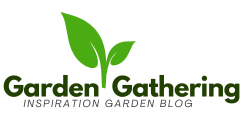Introduction From vibrant tulips to delicate daffodils, flowers bring life and color to any landscape. But behind the scenes of every blooming garden lies a humble yet essential component: flower bulbs. Wholesale flower bulbs form the foundation of countless floral arrangements, landscaping projects, and garden designs. In this article, we delve into the captivating world of wholesale flower bulbs, exploring their types, cultivation, market dynamics, and the role they play in the flourishing floral industry.
Types of Wholesale Flower Bulbs
- Tulips: With their iconic cup-shaped blooms and diverse color palette, tulips are among the most popular wholesale flower bulbs. From classic reds to exotic parrot varieties, tulip bulbs offer endless possibilities for floral arrangements and garden displays.
- Daffodils: Symbolizing renewal and new beginnings, daffodil bulbs are cherished for their cheerful yellow blossoms and delicate fragrance. Wholesale daffodil bulbs come in various sizes and cultivars, making them versatile additions to gardens and landscapes.
- Hyacinths: Renowned for their intoxicating scent and vibrant clusters of flowers, hyacinth bulbs are sought after for both indoor and outdoor cultivation. Wholesale hyacinth bulbs offer an array of colors, including rich purples, pinks, and blues, adding a touch of elegance to any setting.
- Crocuses: As harbingers of spring, crocus bulbs burst forth with delicate, cup-shaped flowers in shades of purple, white, and yellow. Wholesale crocus bulbs are prized for their early bloom times, heralding the end of winter and the arrival of warmer days.
- Lilies: With their elegant blooms and enticing fragrance, lily bulbs are staples in floral arrangements and garden borders. Wholesale lily bulbs encompass an extensive range of species and hybrids, from the majestic Oriental lilies to the graceful Asiatic varieties.
Cultivation of Wholesale Flower Bulbs Cultivating wholesale flower bulbs requires careful attention to environmental conditions, soil quality, and planting techniques. Most flower bulbs thrive in well-drained soil with ample sunlight, although specific requirements vary depending on the species. For optimal results, wholesale growers often employ specialized methods such as cold storage and pre-cooling to simulate natural dormancy periods and promote healthy bulb development.
Propagation techniques for wholesale flower bulbs vary between sexual reproduction (seeds) and asexual reproduction (bulb division or scaling). Many commercial growers utilize asexual reproduction methods to maintain the characteristics of desirable cultivars and expedite the production process. Once harvested, wholesale flower bulbs are meticulously graded and sorted based on size, quality, and variety before being packaged and distributed to retailers, landscapers, and floral designers.
Market Dynamics of Wholesale Flower Bulbs The market for wholesale flower bulbs is influenced by various factors, including seasonal demand, consumer preferences, and emerging trends in gardening and floral design. Spring remains the peak season for wholesale bulb sales, as gardeners and landscapers prepare for the arrival of warmer weather and plan their outdoor projects.
Furthermore, the rise of online platforms and e-commerce has transformed the wholesale flower bulb industry, providing growers and distributors with new avenues to reach customers worldwide. Additionally, sustainability and eco-consciousness are becoming increasingly important considerations for both consumers and businesses, driving demand for organic and responsibly sourced flower bulbs. Wholesale flower bulbs
The Role of Wholesale Flower Bulbs in the Floral Industry Wholesale flower bulbs serve as the backbone of the floral industry, supplying a wide range of businesses with essential raw materials for floral arrangements, landscaping projects, and garden displays. Florists rely on high-quality bulbs to create stunning bouquets and centerpieces for weddings, events, and everyday occasions.
Landscapers and garden designers utilize wholesale flower bulbs to add seasonal color and visual interest to residential and commercial properties. Whether planted en masse in expansive flower beds or used sparingly as accent pieces, flower bulbs play a pivotal role in shaping the aesthetic appeal of outdoor spaces.
Moreover, wholesale flower bulbs contribute to biodiversity and ecosystem health by supporting pollinators such as bees, butterflies, and hummingbirds. By selecting native and pollinator-friendly bulb varieties, growers and gardeners can create vibrant habitats that benefit local wildlife and promote ecological balance.
Conclusion Wholesale flower bulbs represent more than just dormant plant embryos awaiting their moment to bloom; they embody the promise of new beginnings, the beauty of nature’s cycles, and the creativity of human expression through gardening and floral design. As we continue to appreciate the wonders of flowers and the vital role they play in our lives, let us not forget the humble yet extraordinary bulbs that serve as their silent guardians, ready to awaken the world with each passing season.
This article is provided by https://www.devroomen.ca/
